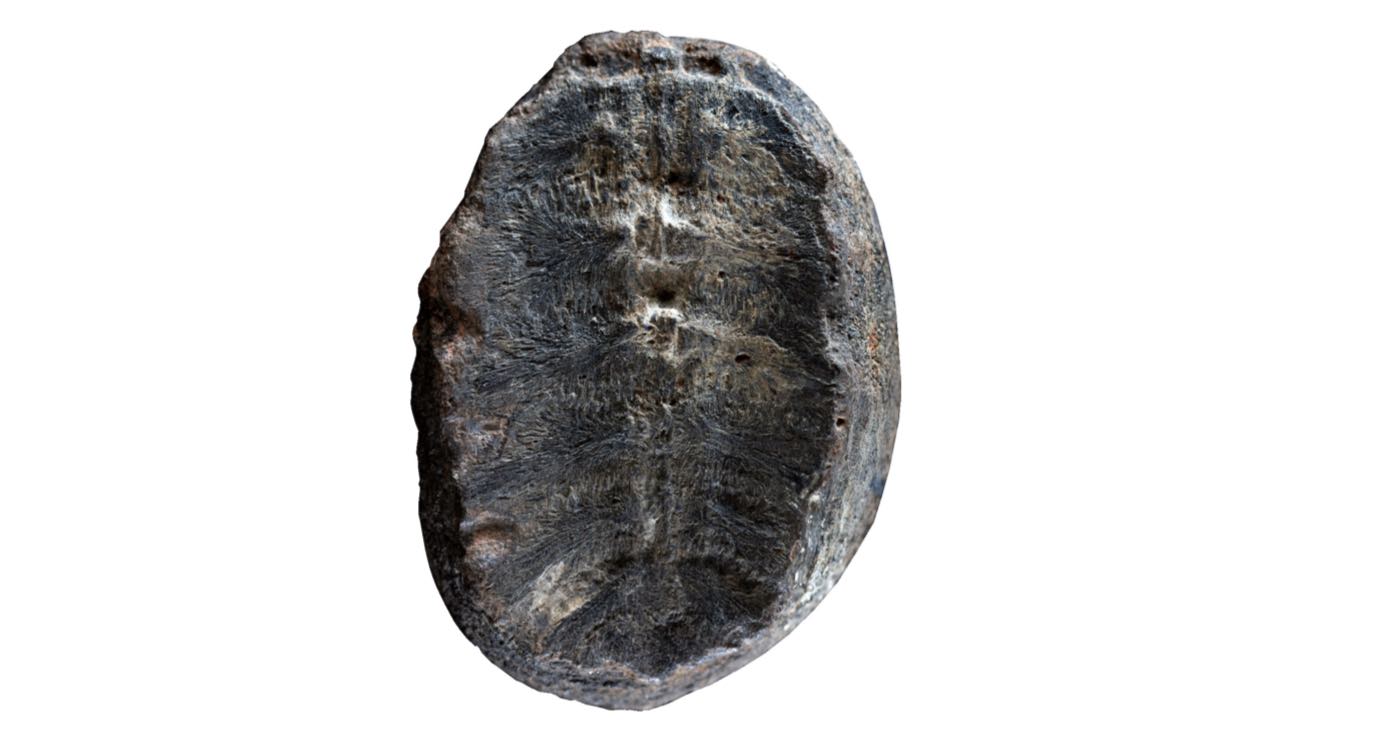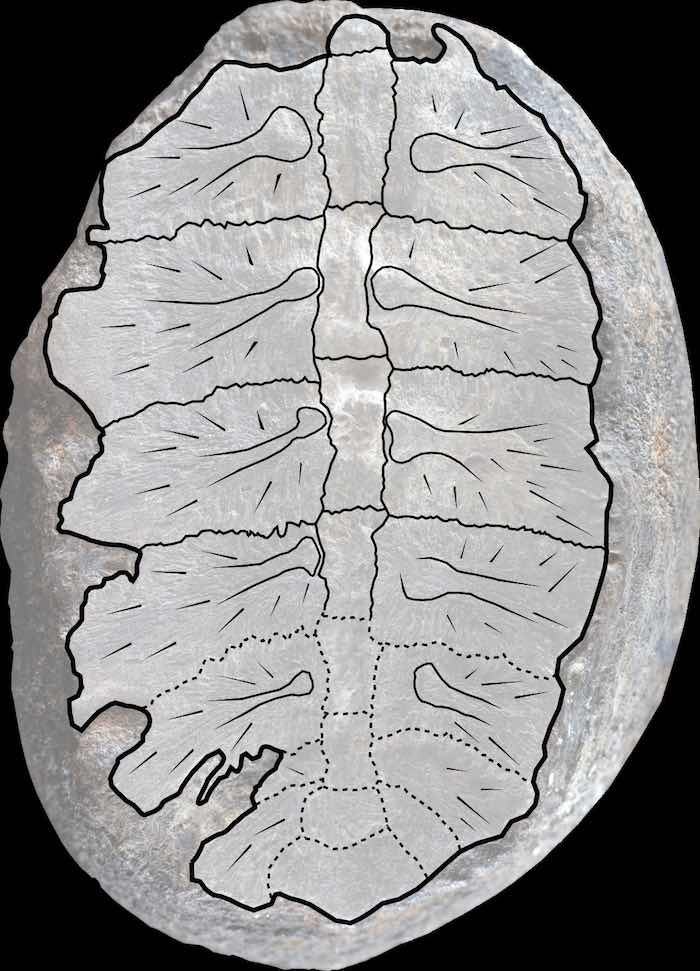
A fossil thought for years to be a plant turns out to be a baby turtle—and surprised researchers have nicknamed it “Turtwig” after a Pokemon character that is half-turtle, half-plant.
From the 1950s to the 1970s, a priest named Padre Gustavo Huertas collected rocks and fossils near a town called Villa de Levya in Colombia.
Two of the specimens he found were small, round rocks patterned with lines that looked like leaves. He classified them as a type of fossilized plant.
But a new study, published in the journal Palaeontologia Electronica, researchers re-examined the “plant” fossils and found that they weren’t plants at all: they were the remains of baby turtles.
“It was truly surprising,” said Héctor Palma-Castro, a paleobotany student at the Universidad Nacional de Colombia.
The plants in question had been described by the priest in 2003 as Sphenophyllum colombianum. The fossils come from Early Cretaceous rocks dating back to between 113 and 132 million years ago, during the dinosaur days.
Fossils of Sphenophyllum colombianum would have been rare at that time, as the other known members of the genus Sphenophyllum died out more than 100 million years prior.
The plants’ age and locality piqued the interest of Colombian-born Dr. Fabiany Herrera, the assistant curator of fossil plants at the Field Museum in the United States, and his student, Mr. Palma-Castro.
Dr. Herrera recalled, “We went to the fossil collection at the Universidad Nacional de Colombia in Bogotá and started looking at the plants, and as soon as we photographed them, we thought, ‘this is weird.’”
At first glance, at two inches in diameter, the fossils looked like rounded nodules containing the preserved leaves of the plant Sphenophyllum. But the pair noticed key features that weren’t quite right.

“Deciphering the shape and margin of the leaf proved challenging,” said Palma-Castro.
LOOK: Portuguese Man Accidentally Finds 82-Foot-Long Dinosaur in His Backyard
“When you look at it in detail, the lines seen on the fossils don’t look like the veins of a plant, explained Dr. Herrera. “I was positive that it was most likely bone.”
Herrera reached out to an old colleague, Edwin-Alberto Cadena, a paleontologist who focuses on turtles and other vertebrates at the Universidad del Rosario in Bogotá. He confirmed the photos definitely looked like the bony upper shell of a turtle (carapace).
When he saw the scale of the photos, Prof. Cadena said, ‘Well, this is remarkable, because this is not only a turtle, but it’s also a hatchling specimen, it’s very, very small.”
Cadena and his student, Diego Cómbita-Romero, further examined the specimens, comparing them with the shells of both fossil and modern turtles.
“When we saw the specimen for the first time I was astonished, because the fossil was missing the typical marks on the outside of a turtle’s shell,” said Cómbita-Romero. “It was a little bit concave, like a bowl.
“At that moment we realized that the visible part of the fossil was the other side of the carapace, we were looking at the part of the shell that is inside the turtle.”
DINO NEWS: New Dinosaur With Rows of Bristles On its Head Like a Toothbrush Has Been Discovered
Details in the turtle’s bones helped the researchers estimate how old it was at death. The juvenile likely died when it was less than one year old.
“This is actually really rare to find hatchlings of fossil turtles in general,” said Cadena. “When the turtles are very young, the bones in their shells are very thin, so they can be easily destroyed.”
The researchers say that the rarity of fossilized baby turtles makes their discovery an important one. “Discoveries like these are truly special.”
The features that Padre Huertas thought were leaves and stems are actually the modified rib bones and vertebrae that make up the shell.
They nicknamed the specimen ‘Turtwig,’ after a Pokémon character that’s half-turtle, half-plant.
DID YOU KNOW: Long Before Trees Overtook the Land, Our Planet Was Covered by Giant Mushrooms
“In the Pokémon universe, you encounter the concept of combining two or more elements, such as animals, machines, and plants,” said Palma-Castro. “In this case, Turtwig—the baby turtle with a leaf attached to its head.”
UNEARTH THIS STORY for Pokemon Friends By Sharing on Social Media…



















